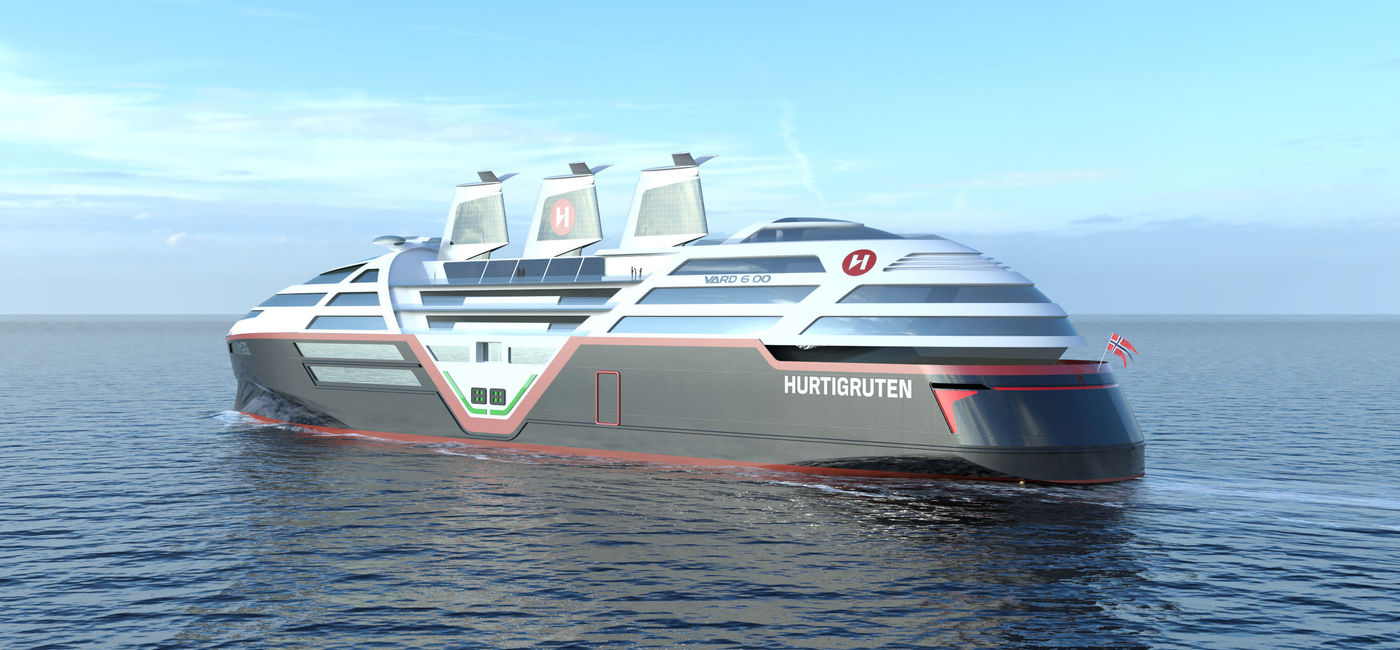Hurtigruten Norway Unveils First Zero-Emission Cruise Ship, the Most Sustainable at Sea

Hurtigruten Norway is celebrating its 130th anniversary this year by sharing more information about the development of the most sustainable ship at sea, a zero-emission ship whose project name is ‘Sea Zero.’
The Sea Zero project’s first zero-emission ship will debut in 2030; the line expects to completely replace its current fleet with zero-emission ships in the future. The line’s ships will feature electric batteries that charge while in port, along with harnessing power from the wind. Retractable solar panel sails, the use of artificial intelligence, contra-rotating propellers and retractable thrusters are only some of the other advancements the ships will feature to make the ships truly emission-free.
The most visible sustainability feature of the Sea Zero ships will be the three retractable wing rigs that combine solar and wind energy capture technology. They will reach a maximum height of 164 feet when fully extended, towering above the ship to harness the readily available power.
The first ship will measure 443 feet or 135 meters long and will feature space for 500 guests and 99 crew members. It will also offer a large cargo hold for shipping.
Guests will be able to minimize energy consumption while on-board by using a mobile app to measure their personal water and energy consumption, as well as operate their cabin ventilation.
The Sea Zero project is currently in its two-year project phase of testing and developing the technologies needed to create this groundbreaking vessel.
“When we initially announced the ‘Sea Zero’ project over a year ago, we were faced with the challenge of not knowing which technologies would be available to us in 2030,” said Hedda Felin, CEO of Hurtigruten Norway. “Our task was to pave the way for new innovations and enhance existing ones to align with our sustainability objectives. While some of these technologies have reached a relatively advanced stage, they still necessitate dedicated research and development to ensure successful implementation within the maritime context.”
